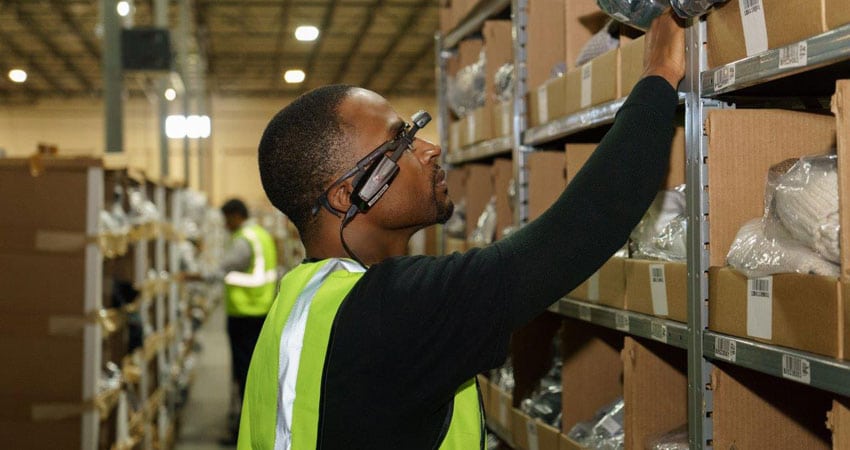While Google Glass never took off as a cool augmented reality gadget for consumers, it’s having a second life as an enterprise tool in manufacturing and distribution, and DHL Supply Chain is testing it at its operations in Columbus, OH for two customers.
In addition to Google, DHL is also testing augmented reality glasses from Vusix, and in both cases using middleware from Ubimax to communicate with its warehouse management system. Adrian Kumar, Vice President of Solutions Design for DHL Supply Chain in North America, said the company is using both systems side-by-side to fulfill orders for a major fashion retailer and a technology firm and may continue to do so.
Kumar said DHL has seen pick productivity increase from 6% up to as much as 15% using the augmented reality glasses. The company began piloting them in 2015 at a facility in the Netherlands servicing Ricoh, with the Columbus operation – the only one in North America – going live last year.
“We immediately saw benefits, including increased accuracy and pick productivity,” said Kumar. “It works best in omnichannel e-fulfillment, which is the ideal profile. A picker with an RF scanner is constantly looking at the gun to get pick commands, hitting the confirm button and doing things in sequential fashion. But with the glasses they see an augmented image along with the item number, location, pick quantity and more. And they can allocate among 12 different orders, using the many visual cues.”
One capability DHL has not tapped yet is the glasses’ ability to provide navigation around the warehouse, with arrows in the display indicating the pick path. “They can provide visual navigation, like the GPS in your car,” Kumar said. “A warehouse’s numbering system can be hard for someone to learn coming off the street, with all the aisle and location numbers.”
Another area where augmented reality has shown benefits is cross-docking, where cases are opened as orders come in and items are immediately allocated for store shipments to fulfill online orders. “This is very popular in fashion – as soon as the first wave comes in, it goes back out to stores,” Kumar said. “There are different ways to do it, and a vision solution can definitely help, while cutting down on fixed infrastructure like (pick to) light and big put walls.”
He also said the glasses work well within DHL’s existing infrastructure, so expensive overhauls like redesigned conveyor and sorter systems are not required.
While the augmented reality glasses might not be ideal in every situation, Kumar said DHL is selectively adding it to bids on new business, including three current proposals; the same is true of its robotic capabilities with Locus Robotics.

